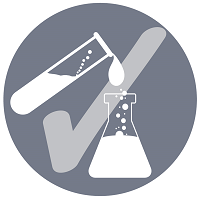Formulation and Delivery
Symposium: Accelerating Drug Development Through Digital Innovation 2
Computational Modeling for Lipid Nanoparticle Formulation Development, Efficacy and Targeting
Wednesday, November 12, 2025
9:30 AM - 10:00 AM CT
Location: Stars at Night B2/B3

John C. Shelley, PhD
Fellow
Schrodinger, LLC
Portland, Oregon
Speaker(s)
We will start off describing lipid nanoparticle - nucleic acid (LNPna) drug formulation, technology and delivery
strategies along with a problem statement highlighting - how the limited understanding of the structure and
behavior of LNPna systems during the formulation development, storage, and in vivo delivery negatively
impacts the overall viability of a drug program. The understanding of the structural aspects of the LNPna
helps in the selection of the excipients, encapsulation efficiency, efficacy, improvement in the drug targeting
and hence the development for new therapeutic areas.
Next we will describe a number of computer modeling technologies, particularly physics-based approaches,
for characterizing lipid nanoparticle behavior and structure at the intraparticle - molecular interaction, whole
particle and particle-environment levels to enable more effective formulation, drug production and delivery
strategies. Illustrative examples of the simulation of the self-assembly of LNPna structures for actual
formulations will be part of the talk.
Distinct case studies, illustrating how drug products would be influenced when: 1. The compositional and pH dependence of the LNP structure is unknown, 2. Seeking to improve the endosomal release of the mRNA, 3. Calculating the apparent pKa values of ionizable lipids, 4. There are challenges with incorporating longer nucleic acid sequences into the LNP.
Additionally, using modeling to inform targeting research will be discussed. The studies will illustrate the
complementary use of a number of computational technologies to address these LNPna challenges, including all-atom simulations, coarse-grained simulations, molecular mechanics, ML and quantum
Submission Title: Computational modeling for lipid nanoparticle formulation development, efficacy and targeting
mechanical.
The methodology and current limitations thereof will also be described with examples, namely, 1. Relevant issues that are not addressed, 2. Applicability (complexity) and methodology limitations, 3.Accuracy and reliability
strategies along with a problem statement highlighting - how the limited understanding of the structure and
behavior of LNPna systems during the formulation development, storage, and in vivo delivery negatively
impacts the overall viability of a drug program. The understanding of the structural aspects of the LNPna
helps in the selection of the excipients, encapsulation efficiency, efficacy, improvement in the drug targeting
and hence the development for new therapeutic areas.
Next we will describe a number of computer modeling technologies, particularly physics-based approaches,
for characterizing lipid nanoparticle behavior and structure at the intraparticle - molecular interaction, whole
particle and particle-environment levels to enable more effective formulation, drug production and delivery
strategies. Illustrative examples of the simulation of the self-assembly of LNPna structures for actual
formulations will be part of the talk.
Distinct case studies, illustrating how drug products would be influenced when: 1. The compositional and pH dependence of the LNP structure is unknown, 2. Seeking to improve the endosomal release of the mRNA, 3. Calculating the apparent pKa values of ionizable lipids, 4. There are challenges with incorporating longer nucleic acid sequences into the LNP.
Additionally, using modeling to inform targeting research will be discussed. The studies will illustrate the
complementary use of a number of computational technologies to address these LNPna challenges, including all-atom simulations, coarse-grained simulations, molecular mechanics, ML and quantum
Submission Title: Computational modeling for lipid nanoparticle formulation development, efficacy and targeting
mechanical.
The methodology and current limitations thereof will also be described with examples, namely, 1. Relevant issues that are not addressed, 2. Applicability (complexity) and methodology limitations, 3.Accuracy and reliability
Learning Objectives:
- Understand the main challenges in LNPna research and development and how gaps in our knowledge limit progress in improving efficacy and diversification of ailments treated and treatment strategies.
- Identify projects for which computation tools in combination with experimental techniques can contribute to formulation selection and the optimization of the manufacturing process.
- Know the limitations of computational techniques in order to assess when to apply them, their potential impact, and how to interpret the results.

